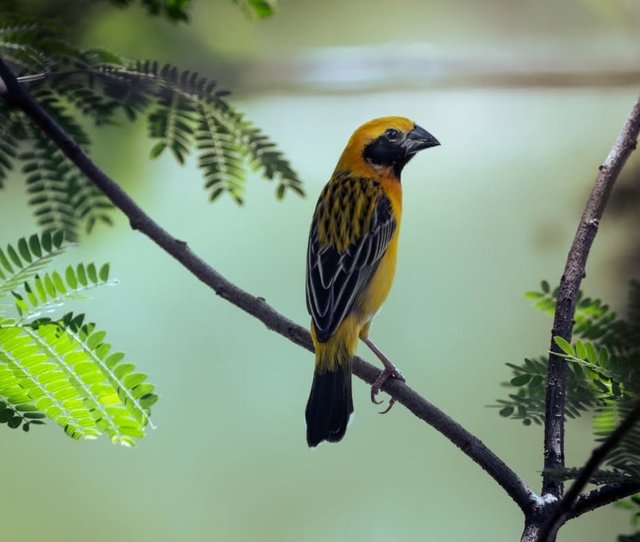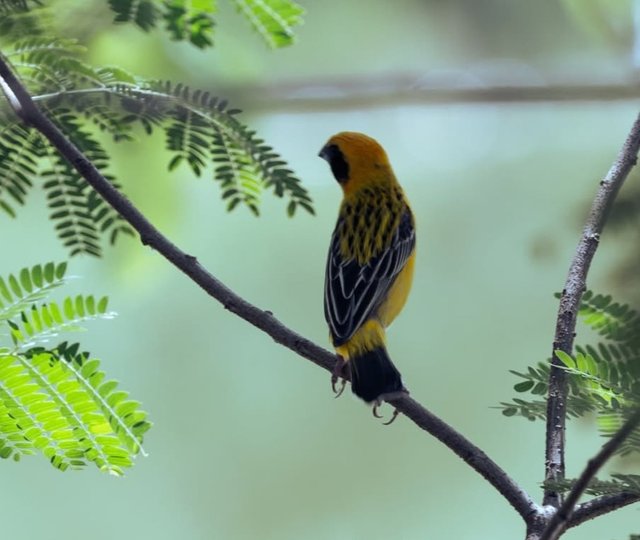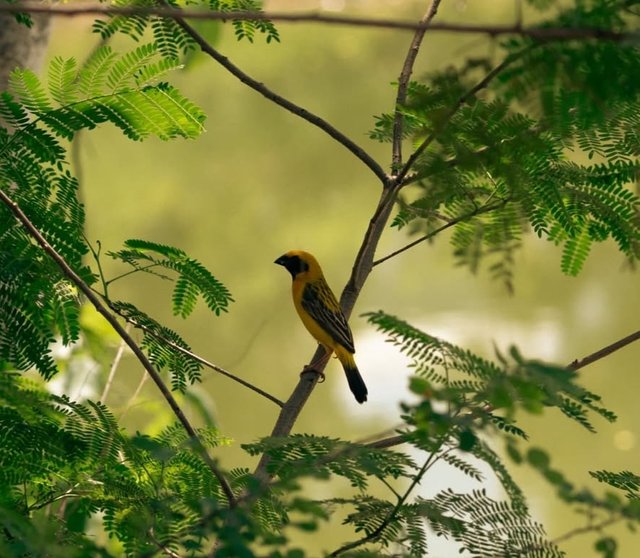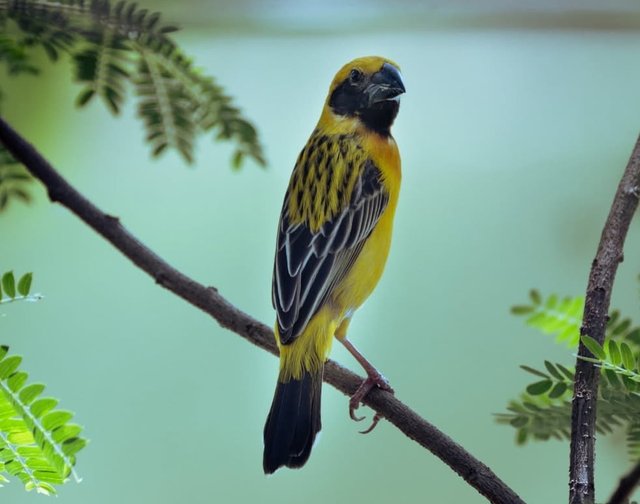Beautiful Asian Golden Weaver Bird
The Fascinating Life of the Asian Golden Weaver
Among the lush wetlands and grassy fields of Southeast Asia, a flash of brilliant yellow darts through the reeds — the Asian golden weaver, a stunning bird that is as industrious as it is beautiful. Revered for their intricate nests and vibrant breeding plumage, these small songbirds are a wonderful example of nature’s creativity and adaptability.
Appearance and Identification
The Asian golden weaver is a relatively small bird, measuring about 14–15 cm in length. During the breeding season, males are particularly eye-catching, adorned in bright golden-yellow feathers with contrasting black markings on the face and throat. Outside the breeding season, the plumage becomes duller, making them harder to spot against the dry grasses they favor. Females and juveniles are generally paler and less vividly colored but still retain a soft, golden hue that sets them apart from other weaver species.
Habitat and Distribution
The Asian golden weaver is found primarily in parts of Thailand, Cambodia, Laos, Vietnam, and portions of Indonesia and Malaysia. They prefer wetlands, swamps, rice paddies, and grassy plains, areas abundant in reeds and tall grasses that offer both food and nesting materials. Unfortunately, as these habitats shrink due to human activities like agriculture expansion and urban development, the weavers face increasing pressure.
Behavior and Diet
Social and active, Asian golden weavers are often seen foraging in small flocks. Their diet mainly consists of seeds and grains, although they will also eat small insects and arthropods, particularly during the breeding season when extra protein is needed to raise chicks.
Their lively, chattering calls often fill the air in their colonies. The birds are highly vocal, especially the males, who sing to attract females and assert territory dominance.
The Art of Nest Building
One of the most remarkable features of the Asian golden weaver is its ingenious nest construction. Males are the primary architects, weaving intricate, globe-shaped nests out of grasses, reeds, and strips of palm or bamboo leaves. The structure usually hangs from thin branches over water, offering some protection from predators like snakes and monitor lizards.
The building process is a critical part of the courtship ritual. Females inspect the nests, and only if they are satisfied with the quality will they mate with the builder. If a nest doesn’t meet her standards, she may abandon it — a strong evolutionary pressure ensuring only the most skillful and resourceful males reproduce.
| Device | cannon eos 700D |
|---|---|
| Lens | 55-250 zoom leans |
| Location | Bangladesh |




